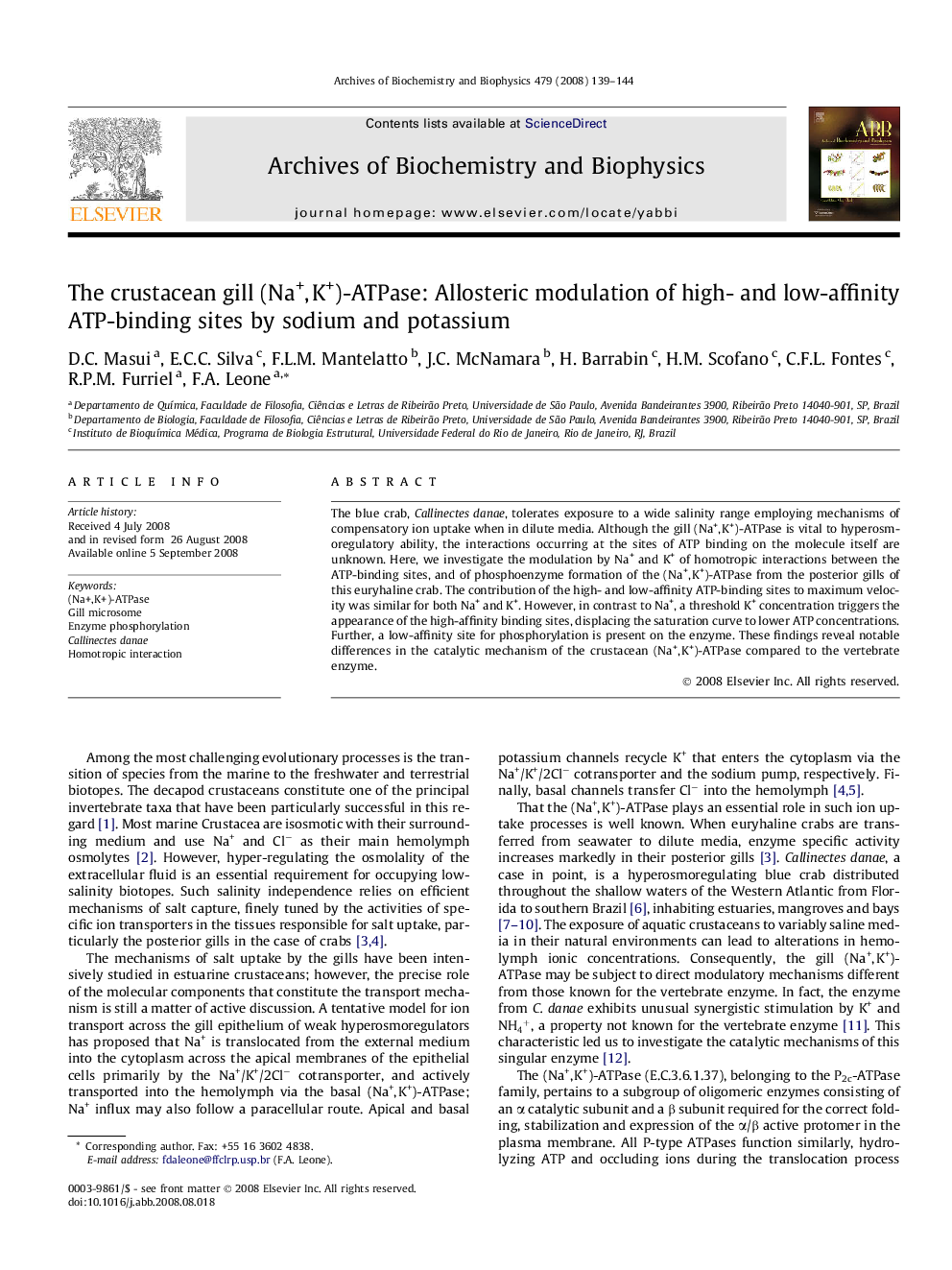| کد مقاله | کد نشریه | سال انتشار | مقاله انگلیسی | نسخه تمام متن |
|---|---|---|---|---|
| 1926704 | 1536467 | 2008 | 6 صفحه PDF | دانلود رایگان |

The blue crab, Callinectes danae, tolerates exposure to a wide salinity range employing mechanisms of compensatory ion uptake when in dilute media. Although the gill (Na+, K+)-ATPase is vital to hyperosmoregulatory ability, the interactions occurring at the sites of ATP binding on the molecule itself are unknown. Here, we investigate the modulation by Na+ and K+ of homotropic interactions between the ATP-binding sites, and of phosphoenzyme formation of the (Na+, K+)-ATPase from the posterior gills of this euryhaline crab. The contribution of the high- and low-affinity ATP-binding sites to maximum velocity was similar for both Na+ and K+. However, in contrast to Na+, a threshold K+ concentration triggers the appearance of the high-affinity binding sites, displacing the saturation curve to lower ATP concentrations. Further, a low-affinity site for phosphorylation is present on the enzyme. These findings reveal notable differences in the catalytic mechanism of the crustacean (Na+, K+)-ATPase compared to the vertebrate enzyme.
Journal: Archives of Biochemistry and Biophysics - Volume 479, Issue 2, 15 November 2008, Pages 139–144